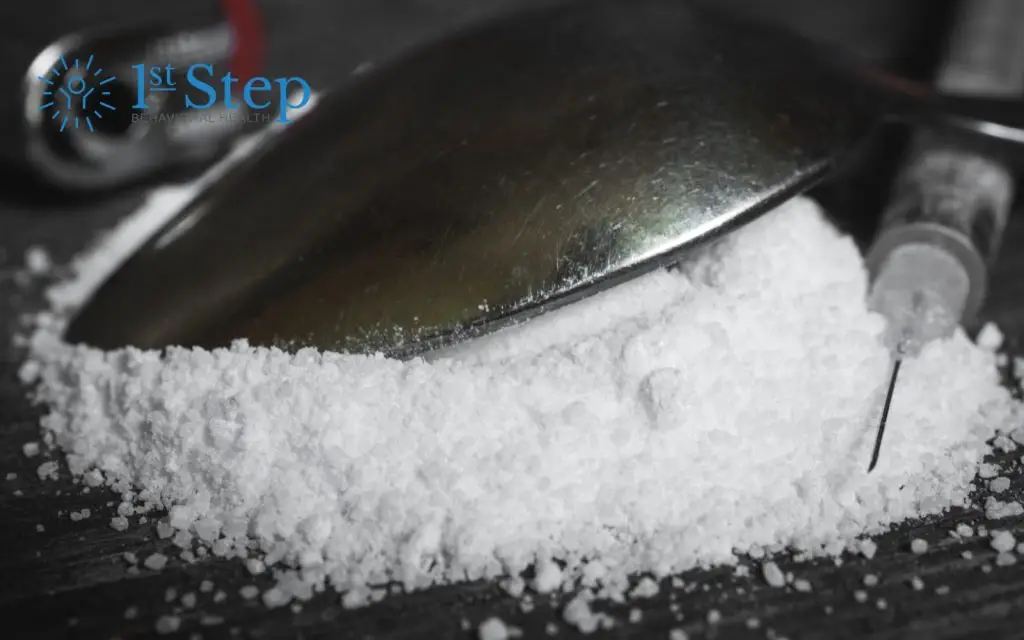Drug abuse can harm your body, mind, relationships, and other aspects of your life. Using addictive drugs can be very dangerous–but mixing drugs can increase the risk of hazardous consequences.
Mixing heroin and cocaine can have serious, life-threatening complications. These addictive drugs are among the most commonly abused illicit substances in the United States.
This article will explore the dangers of combining these dangerous, addictive drugs. You will learn:
- The risks and effects of heroin
- The risks and effects of cocaine
- The dangers of combining heroin and cocaine
- How to treat cocaine and heroin addiction
- Where to find comprehensive addiction treatment
If you or a loved one needs treatment to overcome substance abuse, you are not alone. Contact the First Step Behavioral Health team to learn about our comprehensive treatment and recovery support programs. Reach out with questions or to schedule an intake appointment.
The Effects and Risks of Heroin
Heroin is a highly addictive, illicit drug. It is an opiate, meaning it binds to opioid receptors in the brain. Using heroin just a few times can lead to physical and psychological dependence. In 2021, an estimated 1.1 million people reported using heroin.
Some of the short-term effects of heroin include:
- Euphoria
- Nausea
- Vomiting
- Confusion
- Constricted (tiny) pupils
- Slow, shallow breathing
People who use heroin are at risk of a life-threatening opioid overdose. Heroin addiction can be very challenging to overcome. Most people require comprehensive treatment to stop using it safely.
The Effects and Risks of Cocaine
Cocaine is a potent, illicit stimulant drug. As of 2022, an estimated 42 million people in the U.S. were estimated to have tried cocaine at some point in their lifetime. People who use cocaine experience a range of short-term effects, including:
- Elevated mood
- Euphoria
- Heightened senses
- Increased heart rate and blood pressure
- Increased alertness
- More energy
Cocaine users may also experience unwanted side effects, including:
- Anxiety
- Panic attacks
- Psychosis
- Agitation
- Irritability
- Aggression or violent behaviors
The effects of cocaine wear off quickly, which can lead to frequent use over a short period. This can increase the risk of overdose and cocaine addiction.
People who abuse cocaine for a long time are at increased risk of serious physical and mental health complications. The long-term effects of cocaine abuse include
- Heart attack
- Stroke
- Cardiovascular disease
- Malnutrition
- Severe weight loss
One of the most significant risks of cocaine abuse is the potential for addiction. People may become addicted to cocaine. It can be very challenging to overcome cocaine dependence. Most people require intensive treatment and support programs.
The Dangers of Mixing Cocaine and Heroin
Using cocaine or heroin alone can be very dangerous. Combining these dangerous drugs can increase the risk of severe complications. Some people refer to using both drugs as “speedballing.”
Heroin and cocaine have very different effects. Cocaine is a powerful stimulant, and heroin slows central nervous system (CNS) activity. Cocaine increases blood pressure, alertness, and energy. Heroin has sedating effects.
The side effects of speedballing can be dangerous. The body must process these substances simultaneously. The sedative effects of heroin and the stimulant effects of cocaine can put enormous strain on the brain, lungs, liver, and heart.
Some of the dangers of mixing heroin and cocaine include:
- Paranoia
- Incoherence
- Uncontrollable muscle movements
- Respiratory failure
- Heart attack
- Stroke
- Aneurysm
- Manic episodes
- Extreme depression
- Stupor
- Blurred vision
- Lack of sleep
- Mental impairment
Respiratory arrest is one of the most significant, life-threatening effects of speedballing. Cocaine can increase the body’s need for oxygen. Heroin’s effects slow breathing. This can lead to a dangerous lack of oxygen in the blood, resulting in coma or death.
Heroin and cocaine’s effects wear off at different times—the effects of heroin typically last longer than cocaine’s effects. When the stimulant effects of cocaine wear off, the sedative effects of heroin may feel stronger.
Many factors can impact how speedballing affects someone. Age, mental health, the amount of each drug they use, and other things can affect a person’s experience. However, mixing heroin and cocaine can be life-threatening to anyone who does it.
Treating Cocaine and Heroin Addiction
Mixing drugs can be a sign of severe substance use disorder (SUD) that requires immediate treatment. Treatment for substance abuse and addiction happens in stages.
After an assessment to determine the appropriate level of care, people typically begin treatment in a medically supervised detox program. During detox, people receive supervision, medications, and other treatment to help them manage withdrawal symptoms.
After completing detox, people must engage in a comprehensive treatment program to address the complex roots of their substance abuse. Treatment programs may include:
- Mental health treatment
- Medications to reduce the risk of relapse
- Individual, family, and group therapy
- Behavioral therapies
- Relapse prevention education and coping skills
- Exercise, nutrition support, mindfulness, and other holistic therapies
- Aftercare planning and support
Addiction recovery is not a final destination. It is a lifelong journey. Find the support you need to stay on track in recovery at First Step Behavioral Health.
Find Treatment Now
If you or someone you love needs treatment for substance abuse or addiction, you are not alone. Contact the First Step Behavioral Health specialists to explore our comprehensive treatment and recovery support programs. Reach out with questions, for assistance verifying insurance, or to schedule an appointment.
References:
- National Institute on Drug Abuse (NIDA): Heroin
- NIDA: What is the scope of heroin use in the United States?
- NIDA: Cocaine
- Science Direct: The Synergistic Effects of Combining Cocaine and Heroin (“Speedball”) Using a Progressive-Ratio Schedule of Drug Reinforcement
- Minnesota Courts: “Speed-Balling”: Mixing Stimulants and Opioids
Jump to a Section
Call (855) 425-4846
